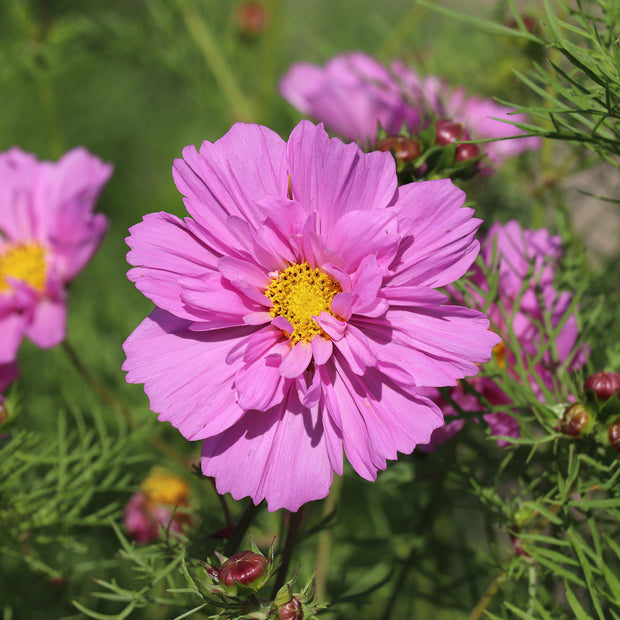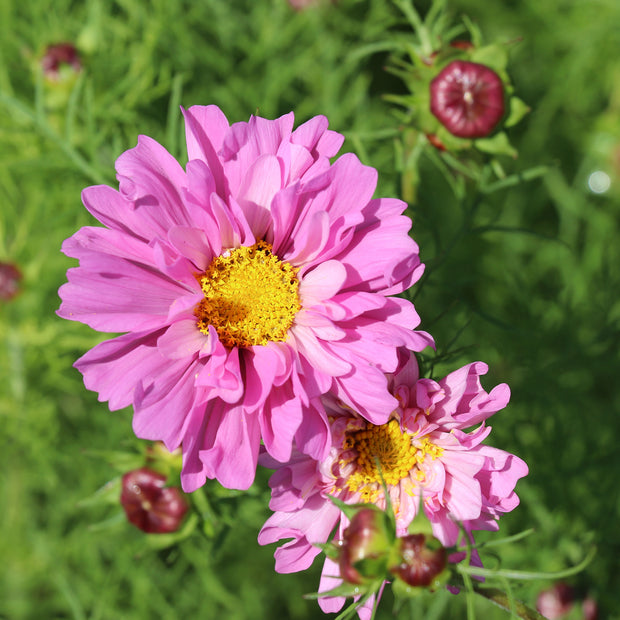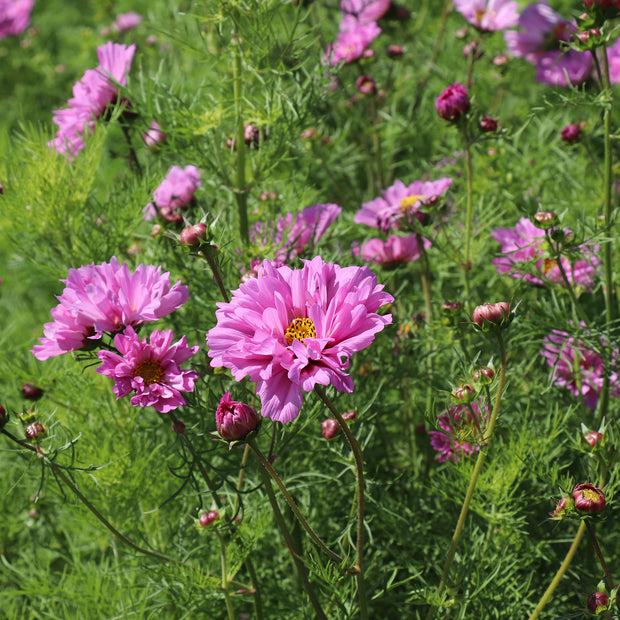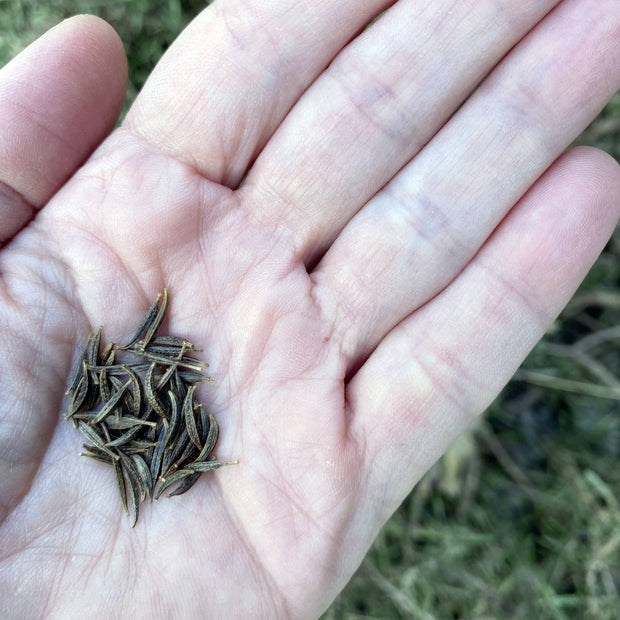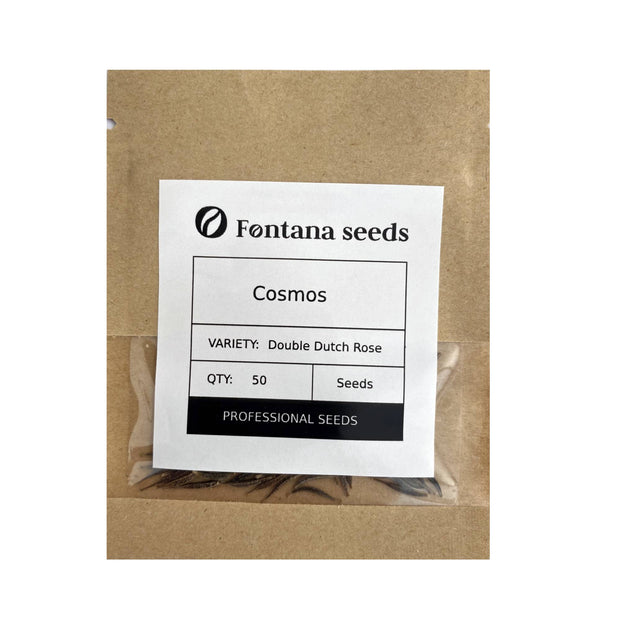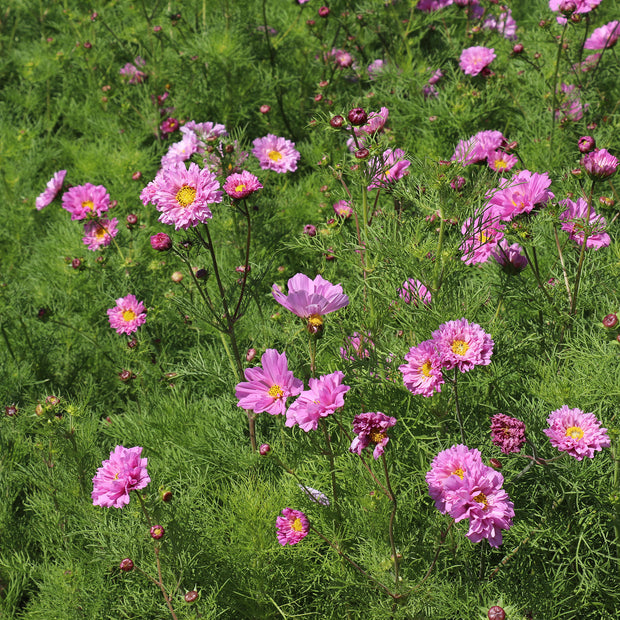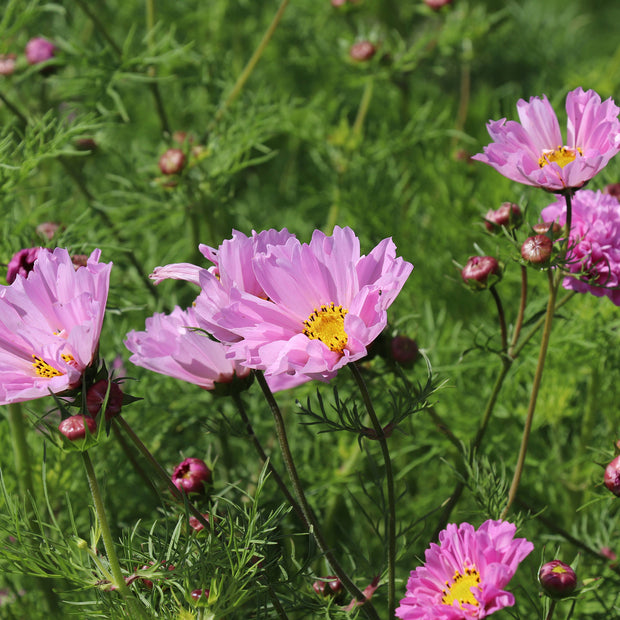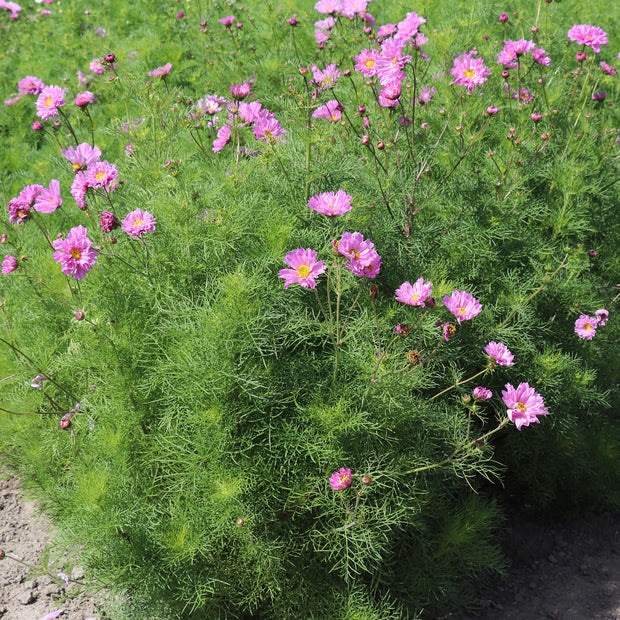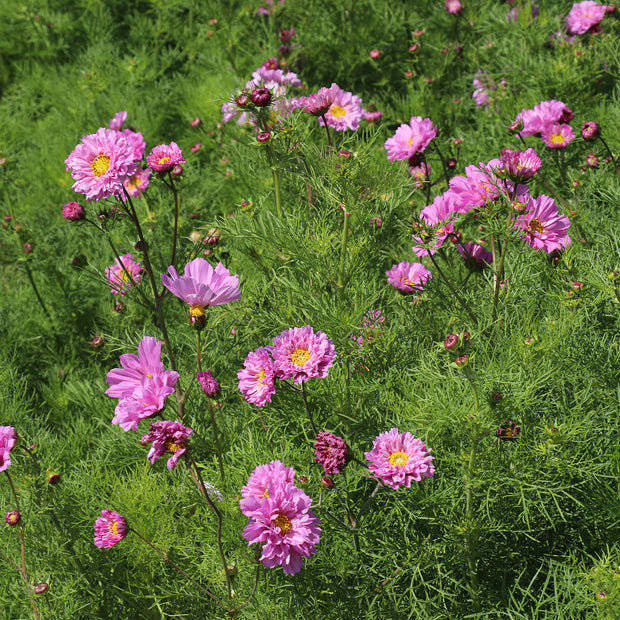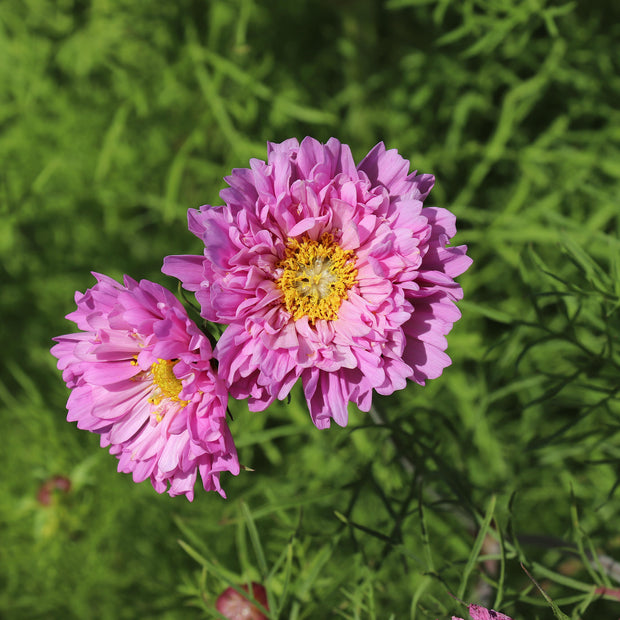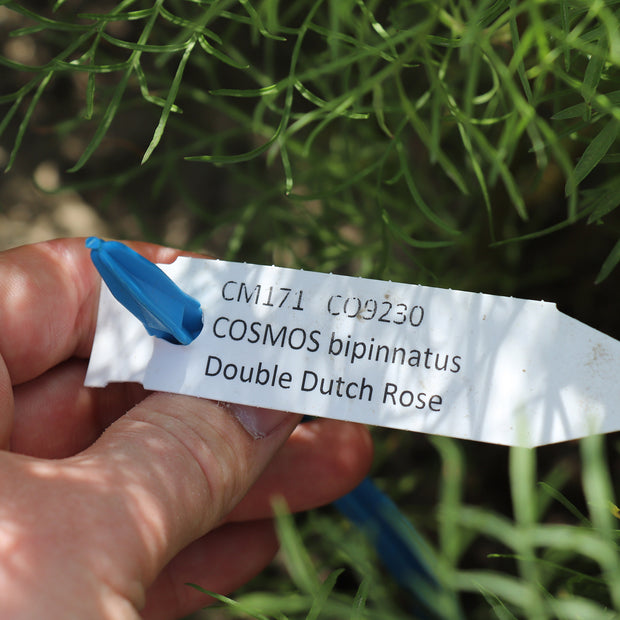Cosmos Double Dutch Rose
As low as €4,25 per package
- Flowering in as little as 12 weeks
- Produces flowers for 4-5 months!
- Exciting new Cosmos with semi-double, rosy white flowers with ruby edge
- 50 seeds per pack
PRODUCT DESCRIPTION
Beautiful large double and semi double, free flowering pink blooms. Tall with very attractive bushy habit. Perfect for borders and looks stunning as a cut flower (120cm!).
Every garden should have some Cosmos bipinnatus - so easy to grow, colourful and with a very long flowering season.
Sowing advice
Growing cosmos is an absolute breeze and they make splendid cut flowers. Once established, these plants can withstand drought, poor soil conditions, and even neglect, making them a hassle-free addition to your garden.
Light: Opt for a sunny spot for optimal flowering. While cosmos can tolerate partial shade, they thrive best under full sun, mimicking the conditions of their native habitats in arid regions.
Soil: Cosmos prefer neutral to slightly acidic soil but can adapt to poor soil conditions. They thrive in well-drained soils with medium moisture levels, and excessive richness in soil should be avoided to prevent flopping over. Staking or planting near supportive plants can help prevent this.
Water: Once established, cosmos generally don't need excessive watering except during prolonged droughts. They're among the last plants to require irrigation where water is scarce.
Temperature and Humidity: Cosmos thrive in hot weather and are resilient to various humidity levels.
Fertilizer: Unless struggling, cosmos don't require fertilization. Excessive fertilizer can lead to vigorous foliage growth but fewer blooms.
Pruning: Deadheading prolongs the flowering season. If needed, shear the plants by about one-third when most flowers have faded to encourage a second flush of blooms.
Propagation: Cosmos readily self-seed, and collecting dried seeds at the end of the season is easy. Note that hybrid varieties may not produce offspring true to the parent plant.
Pests: Though pests like aphids, flea beetles, and thrips may occasionally trouble cosmos, they can be easily managed with a strong spray of water or insecticidal soap. Diseases like aster yellow, bacterial wilt, and powdery mildew may also affect them, so ensure proper spacing for good airflow to prevent such issues.
Growing from Seeds: While nursery seedlings are available, growing cosmos from seeds is simple and cost-effective. Seeds can be started indoors four to six weeks before the last frost, but direct outdoor sowing is also effective. Germination typically occurs within days, with flowering in about 50–60 days.
Cosmos are moderate reseeders, returning each year without becoming overwhelming. Leaving faded flowers in place allows them to self-seed effectively.
Cosmos seeds can be started indoors in containers with drainage holes, filled with starting medium. Thinly scatter seeds on the surface, cover lightly with medium, and keep moist until germination.
Cosmos are half-hardy annuals with daisy-like flowers that bloom from midsummer to the first frosts. They aren't winter-hardy and may succumb to frost or rot in cold, wet soil if left outdoors.
After flowering, cosmos blooms can be cut anytime, but picking them when the petals first open ensures longevity in water. Strip lower leaves and place them in a vase for a delightful display.
Read the most frequently asked questions about cosmos seeds
Fast Facts
- Article number:
- S02380-11
- Botanical Name:
- Cosmos bipinnatus
- Common Name:
- Garden cosmos or Mexican aster
- Days to germinate:
- 0-7 days
- Days to maturity:
- 45-60 days from seed to flower
- Flowering time:
- Jun, Jul, Aug, Sep, Oct
- Hardiness and Longevity:
- Half-hardy annuals
- Height:
- Up To 120cm
- Ideal For:
- Cosmos grow in both beds and containers—and they also make great cut flowers!
- Sunlight:
- Full sun
